Table of Contents
Introduction: Trekking In The Atlas Mountains
Trekking In The Atlas Mountains: The Atlas Mountains, a range stretching across Morocco, are a true fantastic for nature lovers and adventure seekers alike.
This stunning landscape often referred to as the backbone of Morocco, features rugged peaks, lush valleys, and a unique blend of cultural richness.
Spanning over 1,500 kilometers, the mountains separate the Atlantic coastal plain from the Sahara Desert, providing breathtaking views and diverse ecosystems.
Let me share a little about my own experience trekking in the Atlas Mountains. On a crisp autumn morning, I found myself standing at the foot of Mount Toubkal, the air tinged with excitement and the scent of pine.
I joined a small group of fellow adventurers, eager to tackle the trek. Our guide, a local Berber, shared stories of the mountain’s history and the legends that surrounded it.
As we climbed, the landscape transformed before our eyes—rugged rocks gave way to vibrant green valleys, and the sounds of civilization faded into the distance.
We paused at a small village for lunch, where a family welcomed us with open arms. They served us traditional Moroccan bread, fresh olives, and mint tea, a hospitality that warmed my heart.
Sitting there, surrounded by the towering peaks and the laughter of children, I felt a deep connection to the land and its people. It was moments like these that made the trek unforgettable.
1. Overview of the Atlas Mountains: Trekking In The Atlas Mountains
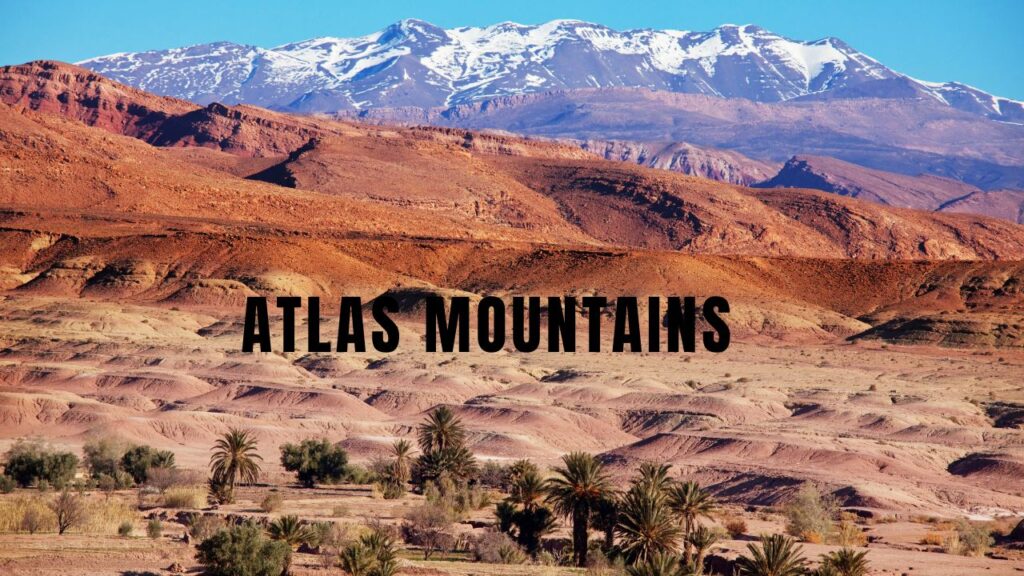
The Atlas Mountains are home to the Berber people, whose rich traditions and vibrant lifestyles are deeply intertwined with the land.
The Berbers have lived in these mountains for centuries, cultivating terraced fields and crafting intricate handicrafts that reflect their heritage.
Among the many peaks of the Atlas range, Mount Toubkal stands out as the highest, soaring to 4,167 meters.
It’s a popular destination for trekkers from all over the world, challenging them to reach its summit and rewarding them with breathtaking panoramic views.
I remember my own journey to Toubkal vividly. Early one morning, I set out from the small village of Imlil, where the air was crisp, and the sun began to rise over the peaks.
The path wound through the valleys, flanked by almond trees and the sounds of local life. As I hiked, I marveled at the terraced fields, where Berber farmers worked diligently, their colorful clothes contrasting beautifully with the earthy tones of the mountains.
The higher I climbed, the more awe-inspiring the views became. Standing on the trail, I took a moment to appreciate the sheer beauty around me—the towering mountains, the valleys below, and the feeling of being part of something much larger.
As I reached the base of Mount Toubkal, I could see other trekkers preparing for the final ascent, their spirits high and ready for the challenge ahead.
This experience in the Atlas Mountains not only tested my physical limits but also enriched my understanding of the incredible interplay between nature and culture in Morocco.
2. Stunning Scenery and Landscapes
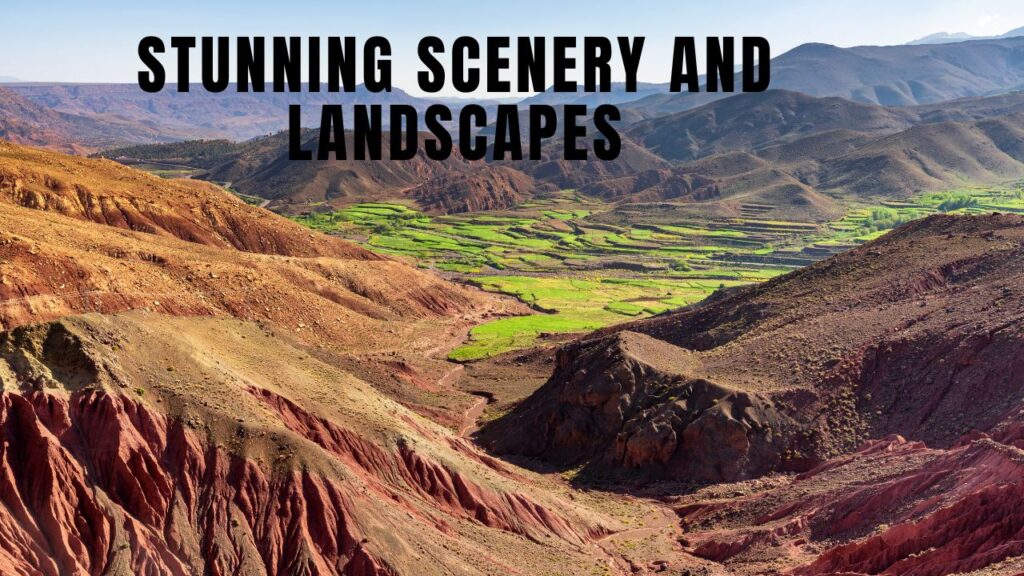
I remember one particularly stunning trek during spring. With a group of friends, I set out early in the morning, the sun just beginning to rise.
The valley was still shrouded in a light mist, creating an ethereal atmosphere. As we made our way up the trail, we were greeted by fields of wildflowers bursting into bloom—pinks, yellows, and purples all mingling together.
We stopped for a moment to take it all in, and I could hear the distant sound of a waterfall cascading down the rocks.
The air was fresh and cool, filled with the scents of earth and growth. I couldn’t help but feel grateful for the opportunity to witness such incredible beauty.
As we climbed higher, the views expanded. The ever-changing scenery made each step an adventure, reminding me of why I love trekking in the Atlas Mountains.
Whether you’re surrounded by vibrant blooms in spring or the serene silence of winter, the stunning landscapes here leave an imprint on your heart, making every trek a cherished memory.
Read More3. Immersive Berber Culture in the Atlas Mountains
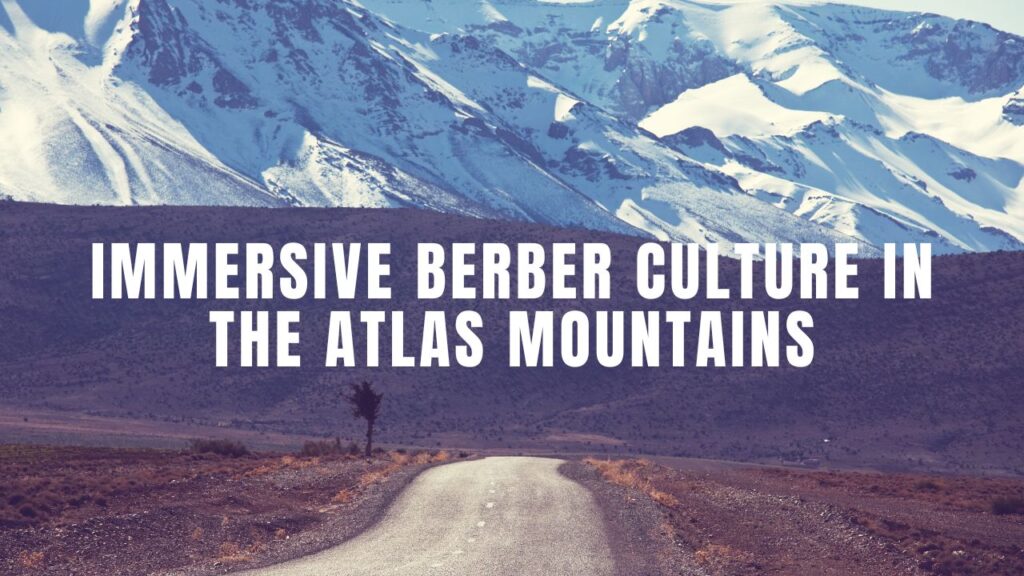
One of the most memorable experiences I had while trekking was in a small Berber village in a valley. After a long day of hiking, my group and I arrived just before sunset.
We were warmly greeted by the locals, who invited us to join them for dinner.
Sitting on low cushions around a wooden table, we shared a meal of couscous, seasoned vegetables, and tender lamb.
Laughter filled the air as we communicated through gestures and smiles, despite the language barrier. The hospitality was heartwarming, and it felt like we were part of a larger family for that evening.
After dinner, we gathered outside under a sky full of stars. The village elder shared stories of their ancestors and the mountains surrounding us, weaving tales of bravery and resilience.
Listening to him, I felt a deep sense of connection to the land and its people. It was a moment that transcended language, reminding me of the power of storytelling and the bonds that unite us all.
This immersive experience highlighted the importance of culture in the Atlas Mountains. The Berber way of life offers insights into sustainable living, showcasing how communities can thrive while respecting nature.
Their traditions, from farming methods to artisanal crafts, reflect a profound understanding of the environment that many urban dwellers often overlook.
In the Atlas Mountains, trekking isn’t just about reaching a peak; it’s about engaging with a culture that celebrates life, community, and the beauty of the world around them.
Each step along the trails reveals new stories, new faces, and a deep appreciation for the rich tapestry of Berber heritage.
4. Diverse Trekking In The Atlas Mountains
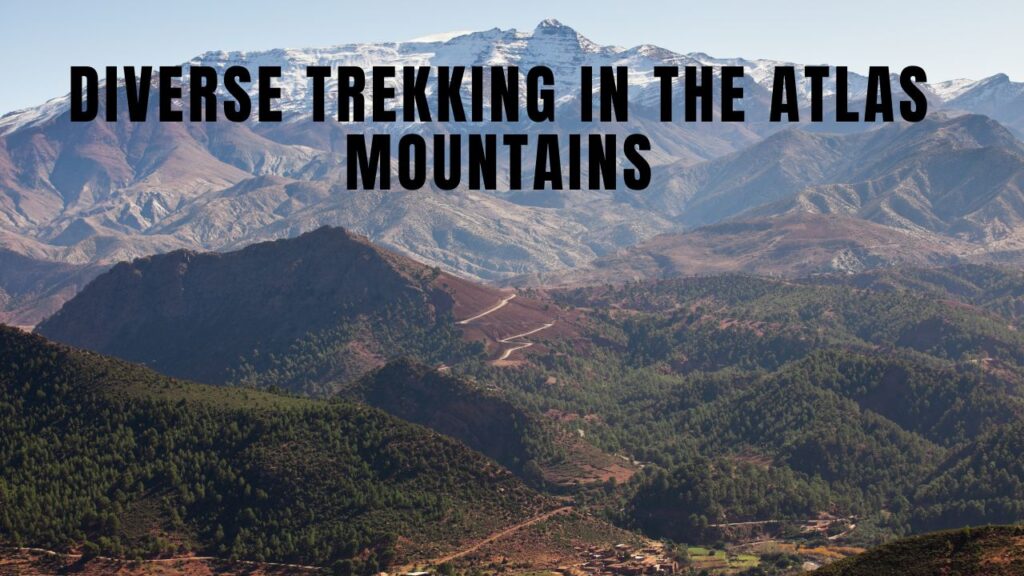
One of the most popular trekking routes is the ascent to Mount Toubkal, the highest peak in North Africa. This trek is often considered a rite of passage for hikers.
It typically takes two days to reach the summit, with the first day spent climbing through lush valleys and rocky terrain, culminating in a night spent in a mountain refuge.
The excitement builds as you approach the summit, where you’re rewarded with breathtaking views that stretch as far as the eye can see.
The morning we set out to conquer Toubkal was filled with anticipation. The sun was just peeking over the mountains, casting a warm glow on the path ahead.
With my guide leading the way and a small group of fellow trekkers by my side, we embarked on our journey, eager to reach the peak.
The trail wound through beautiful landscapes, revealing terraced fields and small Berber villages along the way. As we hiked, I felt a sense of camaraderie with my fellow trekkers.
We shared stories and laughter, and the shared struggle of the ascent made us feel like we were part of something special.
As we reached higher altitudes, the scenery changed dramatically. We transitioned from vibrant green valleys to rocky terrain, with snow-capped peaks looming in the distance.
The air grew thinner, and with every step, I could feel the challenge intensifying. But the sense of accomplishment was palpable, and we pressed on, fueled by determination and the breathtaking vistas surrounding us.
On the second day, as we neared the summit, I could see other hikers making their way up the final stretch. The energy was electric, and I found myself filled with excitement.
Finally, we reached the top, and I stood there, breathless—not just from the climb, but from the sheer beauty of the moment. The view was nothing short of magical, with the world sprawling below us, dotted with valleys, lakes, and distant peaks.
It was a moment I’ll never forget, one that filled me with gratitude for the adventure and the stunning landscapes we had traversed.
5. Wildlife and Nature in the Atlas Mountains
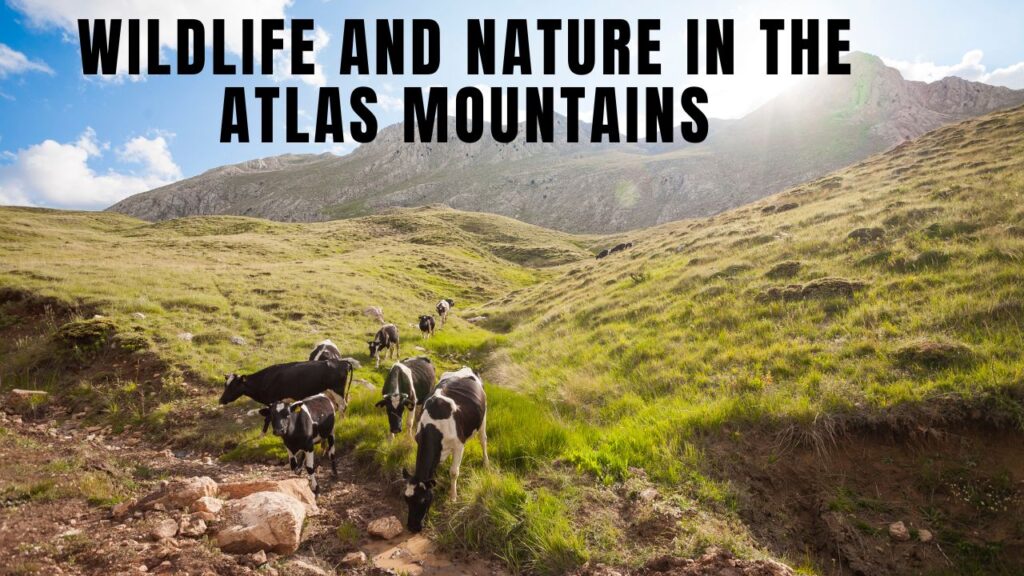
The Atlas Mountains aren’t just a paradise for trekkers; they’re also home to a rich variety of wildlife and breathtaking natural features that make every hike a unique adventure.
As you explore this stunning region, you might find yourself captivated by the diverse ecosystems, from lush valleys to rocky highlands, each teeming with life.
I remember a particular trek through the Ait Bouguemez Valley, a hidden gem in the Atlas range. As my friends and I set out early one morning, the sun was just beginning to rise, casting a golden hue over the landscape.
The fresh mountain air was invigorating, and we felt energized as we made our way down the winding path. The sound of a babbling brook accompanied us, creating a soothing backdrop to our adventure.
As we hiked deeper into the valley, we noticed the flora around us changing. Wildflowers began to bloom in vibrant colors, their delicate petals dancing in the gentle breeze.
I felt a sense of joy every time we spotted a new flower, each one more beautiful than the last. It was a reminder of how nature thrives in even the most rugged terrains.
Then we heard a rustling in the surrounding bushes as we stopped for a rest. With a mix of excitement and curiosity, we waited quietly to see what would emerge.
To our delight, a group of Barbary macaques appeared, chattering and playing with one another. It was an unforgettable moment as we watched them interact, completely immersed in their world.
Their playful antics brought smiles to our faces and made us feel like we were part of something much larger than ourselves.
In addition to the wildlife, the landscapes in the Atlas Mountains are nothing short of spectacular. Glacial lakes mirror the peaks above, creating stunning reflections that seem almost surreal.
The contrast between the rugged mountains and the shimmering water makes for incredible photo opportunities. The changing light throughout the day casts different hues on the scenery, making each moment feel fresh and exciting.
6. Practical Tips for Trekking In The Atlas Mountains
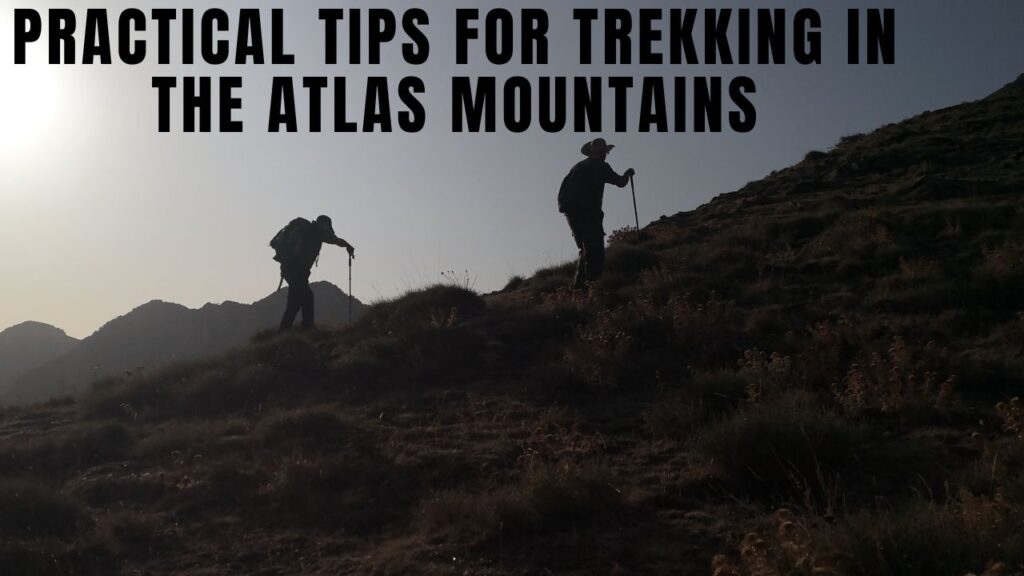
Trekking in the Atlas Mountains is an adventure of a lifetime, but it does come with its own set of challenges. To make the most of your experience, it’s important to be prepared.
Here are some practical tips to help you navigate the trails, enjoy the stunning scenery, and connect with the rich culture of this incredible region.
- Choose the Right Time to Go
- Pack Wisely
- Stay Hydrated and Nourished
- Hire a Local Guide
- Respect the Environment
- Embrace the Experience
7. Best Time to Visit the Atlas Mountains
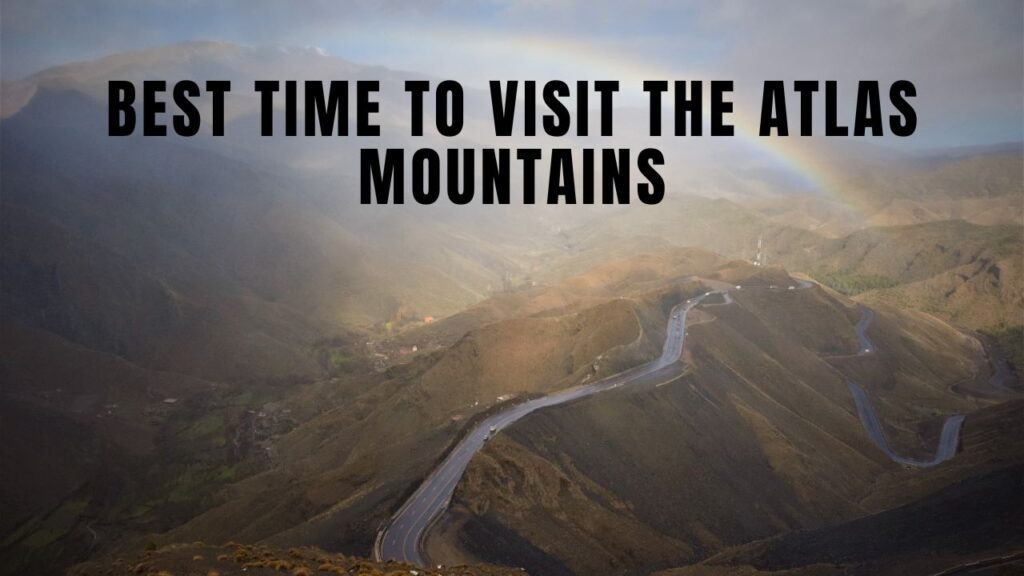
When it comes to trekking in the Atlas Mountains, timing can make all the difference. If you’re planning your adventure, knowing the best seasons to visit is essential.
Generally, the ideal times for trekking are from March to May and September to November. During these months, you’ll find the weather most conducive for hiking, allowing you to truly enjoy the stunning landscapes without too many obstacles.
8. Essential Packing List for Trekking in the Atlas Mountains
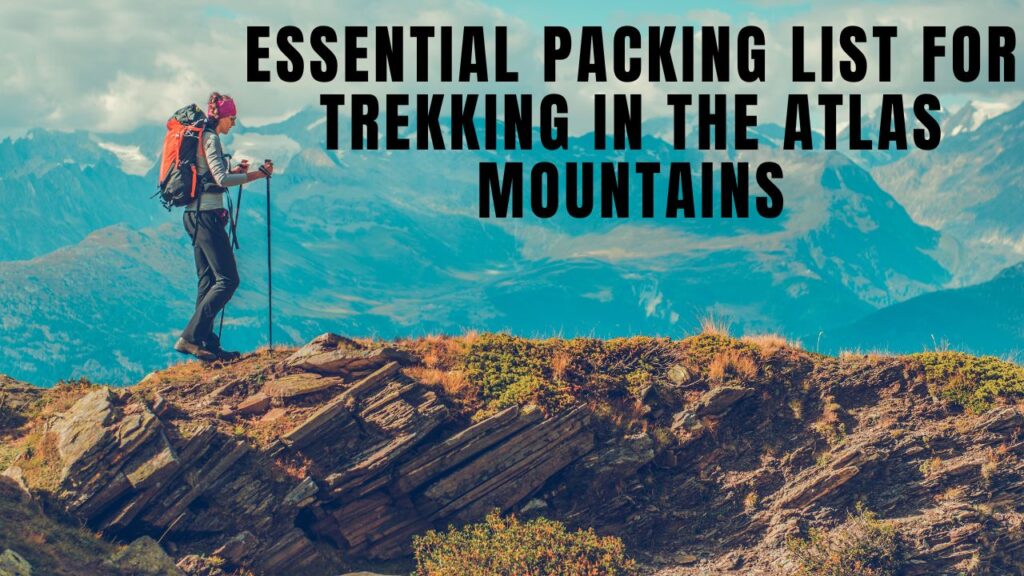
When gearing up for a trek in the Atlas Mountains, having the right packing list can make all the difference.
Whether you’re a seasoned hiker or a novice adventurer, being prepared with the right items ensures your experience is both enjoyable and safe.
Here’s a comprehensive list of essential gear to pack, covering everything from clothing to safety items.
Clothing
The weather in the Atlas Mountains can change rapidly, so layering is key.
An insulating mid-layer, like a fleece jacket, will keep you warm, especially in cooler areas. Finally, a waterproof and windproof outer layer is a must.
Base Layer: Moisture-wicking shirt (long or short-sleeved depending on the season).
Mid Layer: Fleece or light jacket for insulation.
Outer Layer: Waterproof jacket to protect against rain and wind.
Bottoms: Comfortable hiking pants; consider convertible pants that zip off into shorts for warmer weather.
Headgear: A hat for sun protection and a beanie for cooler temperatures.
Footwear: Sturdy, comfortable hiking boots with good ankle support, plus thick, moisture-wicking socks.
I remember on one of my treks, the weather turned unexpectedly cold, and I was grateful for my layered clothing.
We were at a higher elevation, and the chill in the air was biting. I quickly added my fleece jacket and felt a wave of warmth envelop me. It made such a difference.
Safety Gear
Safety should always be a priority when trekking:
First-Aid Kit: When we go trekking then First-aid kit is a must.
Navigation Tools: Some tools like a map, compass, or GPS device can help keep you on track.
Headlamp or Flashlight: Even if you don’t plan to hike at night, it’s a good idea to have one in case of emergencies.
Whistle: A small but important item for signaling in case you get lost or need help.
Food Supplies
Snacking while trekking can keep your energy up, so pack high-energy foods that are easy to carry. Here are some good options:
Trail Mix: A combination of nuts, dried fruits, and maybe a few chocolate pieces for a quick energy boost.
Energy Bars: This is good for instant energy.
Jerky: A protein-packed option that’s lightweight and filling.
Fresh Fruit: Apples and bananas are great for hydration and energy.
During my hikes, I always look forward to snack breaks. One time, we found a stunning viewpoint and decided to have our lunch there.
We sat on a rock, enjoying homemade sandwiches and sharing trail mix. It was a simple moment, but the combination of good food and amazing scenery made it one of my favorite memories.
Conclusion
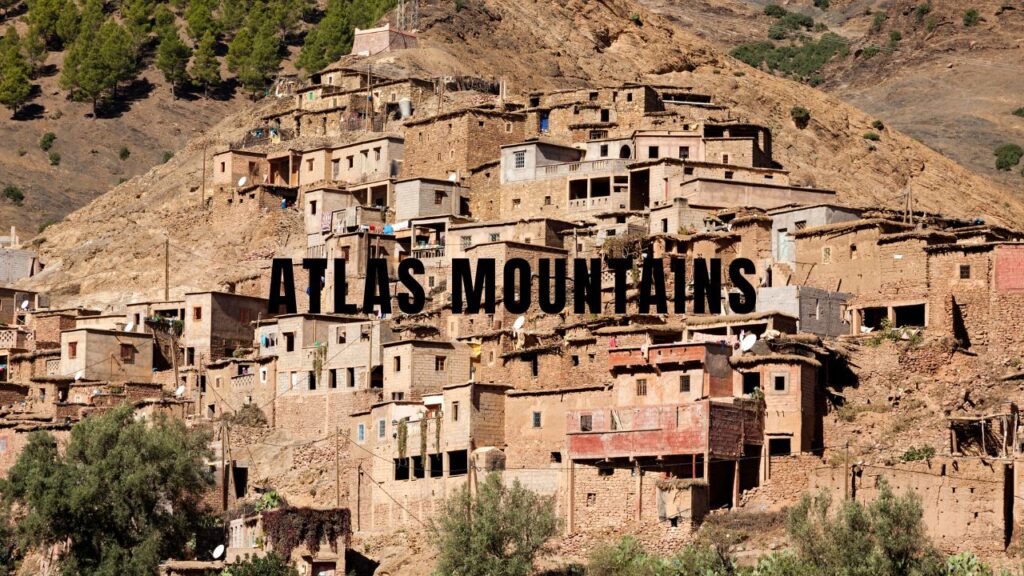
In conclusion, trekking in the Atlas Mountains is an experience like no other, filled with stunning landscapes and moments of connection with nature.
I still remember the thrill of reaching a breathtaking viewpoint, surrounded by colorful wildflowers, with the sun shining down. As we shared snacks and laughter, I felt truly alive, immersed in the beauty around me.
Packing wisely made all the difference, allowing me to focus on the adventure rather than worrying about what I forgot.
So, if you’re planning your trek, gear up, embrace the journey, and create memories that will last a lifetime. If you like the blog you can check our other blogs also.
